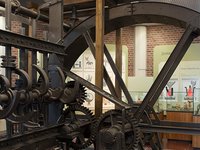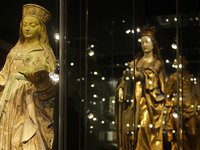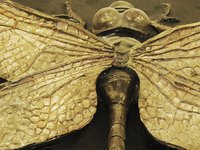Museum Collections
The history of the museum collections extends back into the 19th century, to a time before the establishment of the Deutsches Bergbau-Museum Bochum itself. In 1868, the Westfälische Berggewerkschaftskasse [Westphalian Miners’ Union, or WBK] created a permanent exhibition of “Miners’ Utensils”, containing demonstration materials used in Westphalian mining schools for the training of miners.
The collections have been continuously expanded since that time, and a shift in requirements means new focuses are applied to the inventories.
Through its national and international activities, the Deutsches Bergbau-Museum Bochum has been able to extend its mining history collections beyond the German-speaking regions. So, as well as describing the main aspects of mining within the region, it also highlights the trans-regional developments in mining engineering and culture, beginning from the birth of mining activities right up to the modern age.
Another focus aspect of the institution’s collections are mineralogical raw materials, mineral specimens, fossils (petrification) and rocks, mainly sourced from the aforementioned regions but concentrating on the hard coal deposits of the Ruhr Area. These collections also date from far back into the 19th century.
At the uppermost level, these museum collections are grouped into one of eight collection focus areas, although some objects may be found in more than group, depending on their contextual significance.
Collecting and preserving is one of the core tasks of a museum. Curiously, this usually happens in secret. In our third film, we show that preserving mining is not a dusty business at all and offer spectacular insights into the Montanhistorisches Dokumentationszentrum - an area that visitors do not normally enter.
Click here to watch our video on YouTube:
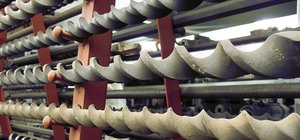
Accessing raw materials through deep mining, surface mining or drilling, and extracting and removing these materials from the extraction point, has always depended on having the appropriate technical equipment. This is true for all the periods of mining activity, and for all the various types of mined raw materials, such as coal, ore, potash and salt for example. The collections that focus on the extraction of mineralogical raw materials encompass objects that represent the specific areas of this narrowly defined technical mining activity. For example, the drifting of mine workings is represented by artefacts ranging from simple Stone Age picks, to drilling and blasting methods and the modern roadheader machine. The actual extraction tools range from the traditional mallet and gad to the modern shearer, a machine weighing many tonnes. Then there are the numerous technical processes, such as mine ventilation and water management techniques, needed to make the mine works accessible and preserve them, and secure them as production sites. These engineering methods are likewise represented, as are activities such as material transport, the haulage of raw materials, as well as various systems for haulage, meaning the transport of mining personnel.
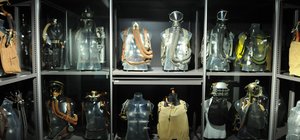
Although the extraction of raw materials was the primary objective of mining, the particular challenges encountered in this activity saw the emergence and continuous development of numerous highly-specific innovative technologies, a phenomenon that may be regarded as an ancillary technical mining-related activity. The relevant aspects here include mine surveying, rescue equipment, respiratory protection systems, mine illumination, communications and tele-control technology, and much more besides. These types of engineering and technology, together with their development, are represented by a range of special collections.
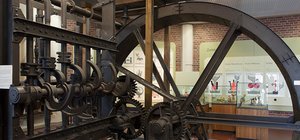
Value can generally be effectively created only if the extraction process is followed by the “dressing” (processing) or refinement of the raw material produced through the mining activity. This dressing process is usually carried out inside the mineworks or very close by, and it requires the use of special technical facilities or industrial plant. Some original degradation, screening, concentrating, washing and sorting plant still exists, with other equipment represented in model form. One of the collection focus areas is hard coal, namely its thermal refinement through the process of coking, including the chemical refinement of by-products produced since the end of the 19th century. These collections also include ore dressing, brine enrichment as well as objects used in the briquetting of lignite.
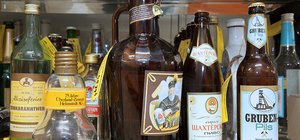
In contrast to the collections focusing on the technical aspects of mining activity, the objects in the everyday life collection are representative of the relevant socio-cultural facets, i.e. the day-to-day aspects of mining life. These include personal articles, such as work clothes and accessories such as water bottles, lunch boxes and snuff boxes, the legacies of local folk and amateur art, advertising materials, heritage and identity-defining artefacts and devotional objects. Other notable objects here include the articles recovered following mine disasters, which were generally irreparably damaged.
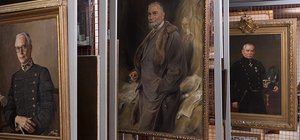
Mine-related art and culture has been one of the collection focus areas of the Deutsches Bergbau-Museum Bochum since as far back as the 1940s. The oldest depictions of mining preserved here date from the time of Antiquity. Aside from paintings, the modern period has also seen the production of numerous objects featuring representations of mining, made from diverse, mostly high-grade materials such as glassware, porcelain, carvings, “Handsteine” (literally: handstones) and prestige artefacts made from metal. The majority of these items were created during phases when a class-orientated/bourgeois mindset pervaded mining, and they may be regarded as evidence of a frequently idealised, class-differentiating perception of the mining industry. With the onset of heavy industrialisation, a more critical reflection on mining became apparent in artistic works, especially during the late 19th century. Many objects made from tin, for example, as well as mining-related imprints also symbolise the special level of appreciation shown towards the raw materials or the products created from them.
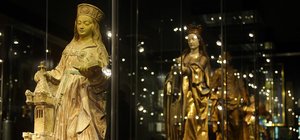
The Christian faith was a highly important aspect in the lives of miners especially in the mining districts of Central Europe, and it played a significant role in the accomplishment of the work and all the specific hazards that came with it. Relevant symbols and objects have found a permanent place in fostering the traditions and culture of mining. Objects bearing mining-related symbols or depictions became increasingly prevalent not only in the churches and chapels, but also at religious processions or funeral ceremonies. St. Barbara, who is still revered as the patron saint of miners to this very day, appears numerous times in this collection focus area. This particular focal aspect has been augmented through the Nemitz-Stiftung St. Barbara (a foundation), with over 500 representations of St. Barbara dating from the 15th century to the current day.

The roots of the mineralogical collections can be traced back more than 150 years, and are closely linked to the development of the erstwhile Westphalian Miners’ Union (WBK). Whereas initial efforts were focused on the collection of nuggets of mineral and ore, as well as rocks from what are now mostly regarded as the classical deposit sites, such as the Ruhr Area, the Ore Mountains, the Harz and the Siegerland, the research projects of the Deutsches Bergbau-Museum Bochum have long concentrated on the relevant raw material bases. Over the course of time, the mineralogical collections have been extended to include international deposit sites. Collections based on mineralogical systems were established at mining schools in order to train mining engineers and mine workers. These are now amalgamated within the Deutsches Bergbau-Museum Bochum.
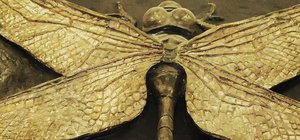
Started a short time after the formation of the Westphalian Miners’ Union (WBK), the creation of the geological-palaeontological collections established a basis for the exploration of the Lower Rhine-Westphalian hard coal district, and for the instruction of mining engineers. These collection activities were largely performed up to the 1970s. This work means that the rocks from the Upper Carboniferous period and the overburden dating from the Upper Cretaceous to the Quaternary Periods in particular, have been very effectively documented. The establishment of a public geological museum in 1919 was one reason why the collection was given a greater trans-regional basis, and extended to include the legacies of other geological eras. Artefacts from the collection have consistently constituted the bases for scientific research, and form part of the published works.
- Jahresbericht montan.dok 2012
- Jahresbericht montan.dok 2011
- Jahresbericht Bergbau-Archiv 2010
- Jahresbericht Bergbau-Archiv 2009
- Jahresbericht Bergbau-Archiv 2008
- Jahresbericht Bergbau-Archiv 2007
- Jahresbericht Bergbau-Archiv 2006
- Jahresbericht Bergbau-Archiv 2005
- Jahresbericht Bergbau-Archiv 2004
- Jahresbericht Bergbau-Archiv 2003
- Jahresbericht Bergbau-Archiv 2002
- Jahresbericht Bergbau-Archiv 2001
- Jahresbericht Bergbau-Archiv 2000
- Newsletter montan.dok 2023|1
- Newsletter montan.dok 2022|2
- Newsletter montan.dok 2022|1
- Newsletter montan.dok 2021|2
- Newsletter montan.dok 2021|1
- Newsletter montan.dok 2020|2
- Newsletter montan.dok 2020|1
- Newsletter montan.dok 2019|2
- Newsletter montan.dok 2019|1
- Newsletter montan.dok 2018|2
- Newsletter montan.dok 2018|1
- Newsletter montan.dok 2017|2
- Newsletter montan.dok 2017|1
- Newsletter montan.dok 2016|2
- Newsletter montan.dok 2016|1
- Newsletter montan.dok 2015|1
